FAQ & Usage Tips
-
 Washer / Washer Dryer
Washer / Washer Dryer
-
Whirlpool washing machine has very low water consumption, can it clean well with so little water?
All European washing machines are designed to minimize energy and water consumption while delivering the best washing performance. We are also awarded "Grade A" washing performance according to IEC standard. So the performance of cleaness is guaranteed.
-
Why does the machine vibrate during drying cycle?
This may due to the uneven load distribution or the machine not place properly on uneven surface. Please take note of the following: spread out your washing load evenly into the drum, avoid too little or too many loads. You can try to put in various size of clothes (big blankets to small pieces ) to enhance washing & spinning efficiency.
If abnormal vibration appears, please refer to the video and see how to fix it.
-
Why does the rubber bellow get mold after a period of time?
They are caused by high moisture after washing. User should open the door at cycle end to let it completely dry-up every time. After using the washing machine, you should open the door and blow dry air to keep the washing machine dry and fresh. Leaving a load in the washing machine will increase moisture and allow odors and mildew to start.
-
Why does the clothing smell bad after washing?
Clothes that are being hung dry in low ventilation area during humid days may have bad smell. Try to use warm water to wash the clothes (but take note on washing labels) can minimize the smell created by the mold and keep the drum clean. Or you can use WPro AFR301 Odour Prevent Tab to deodorize your machine. Just select any programme with 60˚C option.
-
Why can’t I use detergent for start delay program for some machines?
Liquid detergent might enter the machine earlier than when the program start, and therefore may dry out or adhere to the hose. It is best to use detergent powder to guarantee the performance.
-
Why did soap residues or bubbles appear after I finish a wash cycle?
Choose a desired program first, then press “intensive rinse” (i.e. rinse one more time, total 3 times) might help to get rid of the bubbles. Alternatively, the liquid detergent you’re using might create the bubbles. Based on our experience, European brand detergents will create less bubbles than Japanese brand detergents.
-
VIDEOS ON Abnormal Vibration
Front Load WasherTop Load Washer -
VIDEOS ON FILTER CLEANING PROCESS
Front Load WasherTop Load WasherCondenser Dryer -
VIDEO ON TUB WASHER DRAINING PROBLEM
-
VIDEO FOR FIRST TIME USE
FreshCare WFCR96430 Washer Dryer - Set the brightness of LCD displaySmart Silence Washer -
FIND YOUR SERIAL NUMBER
Front Load washerTop Load WasherTub washer -
Usage Tips
- Use the timer to set the washing time before you go to bed and clean clothes will be ready for hanging when you get up in the morning.
- Want to have cleaner result? Use warm water at 30˚C to 40˚C to wash clothes can increase the cleaning efficiency of the detergent. But remember to read the instructions on the caring label first.
- Woolen clothes with machine washable label can be washed with washer equipped with Wool Washing Program, but remember to flip inside out before you put it into the machine.
- Obtain best washing performance by choosing program according to caring label instruction with separate cycles for different color and fabric.
-
Maintenance Tips
- To avoid mold appearing, wipe the plastic edge and the door dry after washing completed. Also keep it open for a while to let the moisture evaporate.
- Wash the lint filter once every two months can ensure perfect cleaning result all the time.
- Use an appropriate amount of detergent. If the amount is too much, the detergent will remain on the clothes, affecting washing performance and operation.
- Washing bag should be put in the middle of the laundry to avoid imbalance.
- Should disinfect washer every 3 months with detergent of 1/5 normal dosage and antibacteria program at 95˚C.
- When not using the washing machine for a long time, unplug the power, drain all water from drainage hose and open the door to dry up the drum.
-
-
 Dryer
Dryer
-
Why is there dew on the wall behind the dryer?
The air outlet is located at the back of the dryer which result in condensation on the wall close to back panel. You can install an exhaust pipe to divert the exhaust air to the out-door.
-
Why are there spots and stain appeared on the drum ?
This is caused by the use of paper type softener. You can use liquid type during wash cycle instead.
-
Can I connect more than one exhaust pipe since it is not long enough?
The maximum length of the exhaust pipe is twelve feet or two elbows, otherwise the exhaustion and efficiency of the dryer will be affected.
-
Videos on filter cleaning process
Condenser Dryer
-
-
 Dehumidpurifier
Dehumidpurifier
-
What is the difference between dehumidifier and dehumidpurifier?
The function of a dehumidifier is only for improving the relatively humidity indoor. While for the dehumidpurifier, apart from dehumidifying, it also contains other functions like air purification, laundry and anti-bacterial / virus, which can be used all year round.
-
Can dehumidpurifier help in removing odour?
If the room temperature at about 25°C and relative humidity at 70%, the humidity level goes up and this facilitate the growth of bacteria. When the bacteria accumulated on clothes, odour will be occurred and this may cause respiratory illness. Using the independent laundry function in a dehumidpurifier helps to dry clothes rapidly and the air-purifying system can also help to inactive the bacterial growth and thus, odour reduced.
-
Is the dehumidifying function in an air-conditioner better than dehumidpurifier?
Though both air-conditioner and dehumidpurifer can perform dehumidifying function, while once the air-conditioner is turned off, water condensation may occur when there is great temperature difference. Meanwhile, the relatively humidity level will go up again which may lead to growth of mold easily. While for a dehumidpurifer, there are several settings for end-user. And the integrated humidity sensor will adjust the fan speed according to humidity level, bring the best performance to user. Last but not least, the annual power consumption of a 9000BTU is about 430kWh, but for a 24L dehumidpurifer, the power consumption is only at 125kWh, which is 71% lower.
-
Usage Tips
- It is normal that warm air will be generated under dehumidifying and laundry function. And if the unit is used in an enclosed room, the room temperature will go up.
- Machine will stop when the temperature or humidity is out of operation range. The ambient operating temperature of the unit is between 5°C-35°C and the ambient operating humidity level is RH% >30%.
- The humidity level displayed is the level at its current position, which may be different from the level at other position. Also, the humidity level shows by the product contains tolerance , which is normal. And it should not be compared with the hygrometer directly.
- Always allow sufficient space around the unit. Insufficient ventilation may affect the unit performance and it may cause overheating or fire. (Recommendation: Upper 50cm; Side 20cm or more on each side; Behind 20cm or more; Front; 20cm or more)
- To avoid residual water from leaking into the machine, please do not remove the water tank immediately once the operation is completed.
- Empty and clean the water tank frequently to prevent bacteria growth.
- For continuous water draining, to position the nozzle below the unit and do not bend the hose. Otherwise water may spill and causing household damages.
- Do not touch the sensor lens. If the lens is stained, it will affect the unit performance.
- Do not insert fingers or foreign objects such as pins, coins, wires or sticks into the air intake or outlet. The unit has a fast rotator fan, hands or foreign objects may cause injury, electric shock and damage to the unit.
- Do not operate the unit in a wardrobe, cupboard or in any narrow or confined space. Insufficient ventilation may cause overheating or fire.
- Do not obstruct air intake or outlet with clothing or anything else. Obstruction of airflow may cause overheating, malfunction or fire.
- The unit is for indoor use only. Do not use in locations without shelter or exposed to direct sunlight. This may cause overheating, short circuit or fire.
-
Maintenance Tips
- Clean the inlet and outlet with soft cloth or vacuum cleaner regularly. Dust may block the airflow, affecting the unit performance and may consume more electricity.
- Check and clean the pre-filter (if any) every two weeks. Make sure to dry them completely before replace it to dehumidpuriifier. Insufficient ventilation may cause low dehumidification performance, frosting, dripping, overheating or fire.
- If the unit is operated in the same position for a long period of time, user should check for dirt under and around it. Move the unit intermittently and clean the floor under it.
- For safety concern and to extend the product life, the compressor is controlled to stay for a few minutes when the unit stops operation.
- After stopping the dehumidpurifier, please wait for at least 3 minutes before restarting the dehumidpurifier to protect the compressor.
- When the compressor overheats, the unit will stop operation automatically for the sake of safety. If this happens, unplug the appliance, wait for at least 45 minutes and then restart the unit.
- When the compressor is running within 24 minutes, but the temperature of copper pipe keep below to 0°C, the compressor will not function and it is not faulty.
- Turn off the dehumidpurifier and empty the water tank before moving the dehumidpurifier.
- Boiling water, eradicator, acid or alkaline detergent, soap, abrasive powder, gasoline, thinner, alcohol, benzene organic solution and brush are not allowed to use for cleaning, it will damage the unit.
-
-
 Dehumidifier
Dehumidifier
-
Usage Tips
- It is normal that warm air will be generated under dehumidifying and laundry function. And if the unit is used in an enclosed room, the room temperature will go up.
- Machine will stop when the temperature or humidity is out of operation range. The ambient operating temperature of humidifier is between 5°C-35°C and the ambient operating humidity level is RH% >30%.
- The humidity level displayed is the level at its current position, which may be different from the level at other position. Also, the humidity level shows by the product contains tolerance , which is normal. And it should not be compared with the hygrometer directly.
- Always allow sufficient space around the unit. Insufficient ventilation may affect the unit performance and it may cause overheating or fire. (Recommendation: Upper 50cm; Side 20cm or more on each side; Behind 20cm or more; Front; 20cm or more)
- To avoid residual water from leaking into the machine, please do not remove the water tank immediately once the operation is completed.
- Display shows "HI", when the room humidity > 80%, at this moment, dehumidifier operates as normal.
- Display shows "LO" when the room humidity between 30%-35%, at this moment, compressor will stop operation.
- Empty and clean the water tank frequently to prevent bacteria growth.
- For continuous water draining, to position the nozzle below the unit and do not bend the hose. Otherwise water may spill and causing household damages.
- Do not touch the sensor lens. If the lens is stained, it will affect the unit performance.
- Do not insert fingers or foreign objects such as pins, coins, wires or sticks into the air intake or outlet. The unit has a fast rotator fan, hands or foreign objects may cause injury, electric shock and damage to the unit.
- Do not operate the unit in a wardrobe, cupboard or in any narrow or confined space. Insufficient ventilation may cause overheating or fire.
- Do not obstruct air intake or outlet with clothing or anything else. Obstruction of airflow may cause overheating, malfunction or fire.
- The unit is for indoor use only. Do not use in locations without shelter or exposed to direct sunlight. This may cause overheating, short circuit or fire.
-
Maintenance Tips
- Clean the inlet and outlet with soft cloth or vacuum cleaner regularly. Dust may block the airflow, affecting the unit performance and may consume more electricity.
- Check and clean the pre-filter (if any) every two weeks. Make sure to dry them completely before replace it to dehumidifier. Insufficient ventilation may cause low dehumidification performance, frosting, dripping, overheating or fire.
- If the unit is operated in the same position for a long period of time, user should check for dirt under and around it. Move the unit intermittently and clean the floor under it.
- For safety concern and to extend the product life, the compressor is controlled to stay for a few minutes when the unit stops operation.
- After stopping the dehumidifier, please wait for at least 3 minutes before restarting the dehumidifier to protect the compressor.
- When the compressor overheats, the unit will stop operation automatically for the sake of safety. If this happens, unplug the appliance, wait for at least 45 minutes and then restart the unit.
- When the compressor is running within 24 minutes, but the temperature of copper pipe keep below to 0°C, the compressor will not function and it is not faulty.
- Turn off the dehumidifier and empty the water tank before moving the dehumidifier.
- Boiling water, eradicator, acid or alkaline detergent, soap, abrasive powder, gasoline, thinner, alcohol, benzene organic solution and brush are not allowed to use for cleaning, it will damage the unit.
-
-
 Air Purifier
Air Purifier
-
Why clean air is importance?
Contained areas like homes, offices, schools, enable potential pollutants to build up more than open spaces do. If we don’t take precaution of our indoor environments, health issues like respiratory and heart diseases will undoubtedly arise. Reduced allergens, contaminants, bacteria and viruses in the air you breathe mean fewer visits to the doctor and more time living the good life.
-
What Causes Bad Indoor Air Quality?
There are many causes of air pollution in homes, workplaces, and elsewhere. For examples, chemicals and harmful gases may come from the new furnitures, second-hand cigarette smoke, pets & pests, poor air-ventilation, molds in humidity places, pollen in a vast, etc. All these bad air put our health at high degree of risks.
-
What is CADR?
CADR is the short term of Clean Air Delivery Rate. It is a standard established by an independent Association of Home Appliance Manufacturers (AHAM). It is an indicator about the volume of filtered air delivered by a air purifier, which describes how well the air purifier reduces pollutants such as tobacco smoke, pollen and dust. It is an attempt to provide a common standard to end-user in evaluating the effectiveness.
-
How to choose a right air purifier?
There are several factors in selecting a air purifier. One of them is room size. Air purifiers are designed for specific room sizes, they are tested and rated accordingly. Always buy an air purifier where the recommended room size is same as or larger than your room. Another factor is CADR, the higher the CADR, the better the purifying effectiveness. Also, select the filtration method that suits your needs and pay attention to the value for the pollutant that affects you the most.
-
Usage Tips
- For optimum purification performance, close doors and windows.
- Always allow sufficient space around the unit. Insufficient ventilation may affect the unit performance and it may cause overheating or fire. (Recommendation: Obstacles from all sides of the product should be more than 30cm)
- Do not block the air inlet and outlet as it will affect the unit performance and overheat may occur.
- Do not use the air purifier in an indoor where a fumigating pesticide is used, chemical residues may accumulate in the unit as a hazard to health.
- Do not use the unit near gas appliances, heating devices or fireplaces.
- Do not put fingers or metal objects into the air inlet or outlet, contact with the components inside may cause injury or electrical shock.
- If using air purifier and heater at the same time, keep the room in good ventilation, otherwise carbon monoxide poisoning may occur.
- Remove all packaging (e.g. plastic bag) of the filters before using.
- Change the filter according to recommendations. However, if the unit is placed in a highly polluted environment, the filter lifespan can be shorter. Keep the filter clean to have the best purifying performance.
-
Maintenance Tips
- Check and clean the pre-filter (if any) periodically. Make sure to dry them completely before replace it to dehumidifier. Insufficient ventilation may cause poor performance, overheating or fire.
- Check the functional filters regularly. If the filter is blocked with dust, clean it with a vacuum cleaner or replace a new one. Blocking the airflow will affect the unit performance.
- Do not remove the front cover when the unit is in use, power supply would be cut off and unnecessary damage may occur to the unit.
- Do not use chemical solvent such as benzene, thinners, etc. for cleaning, that could damage the surface of the unit.
-
-
 Air Conditioner
Air Conditioner
-
How to improve the cooling performance of your air conditioner?
Clean the filter once a month to prevent dust accumulation. Adjust the room temperature to a suitable level, 20ºC-22ºC is recommended to provide a comfortable environment while saving energy. Hire a professional technician to clean your air conditioner thoroughly once a year to maximize the efficiency and extend the durability of your air-conditioner.
-
Why water drip is appeared from the air-conditioner during operation?
In humid days, the water absorbed cannot be fully evaporated, the remaining water thus drips from the air-conditioner. To solve this, you can install a water tray and hose to drain the water properly.
-
Is frequent refrigerant recharge essential for maintaining cool performance?
No! Refrigerant is sealed inside the cooling system, recharge is required only if crack or puncture occured in the pipe. Cooling performance is actually affected by the circulation efficiency of the outdoor and indoor unit, together with smoothness of the motor during operation.
-
How frequent should I clean my air-conditioner?
For best performance, the air-conditioner should be cleaned once a year to ensure circulation efficiency.
-
Usage Tips
- To choose an energy-saving air conditioner, look for the Grade 1 energy label, it will save energy 15% more than a Grade 3 model.
- Adjust the temperature from 20˚C to 22˚C should make the room cool enough, and guarantee energy saving at the same time.
- To maintain stable cooling temperature in the room, avoid opening doors and windows as much as possible.
- Do not put fingers or metal objects into the air inlet or outlet, contact with the components inside may cause injury or electrical shock.
- After removing the filter, so not touch fins to avoid injury.
- If remote controller is lost or damaged, please use auxiliary button to turn on or turn off the air conditioner (for split-type only).
- When the unit status is abnormal, the indicator on panel will display corresponding error code, check it before contacting customer service.
-
Maintenance Tips
- Clean the air filter regularly, filter blocked with dust will affect the cooling performance. Dry the filter thoroughly before placing it back to the unit.
- Do not use hair dryer to dry the filter to avoid filter deformation or fire hazard.
- Thoroughly cleaning should be done by professional technicians once a year.
- To enhance durability, do not restart the machine within 3 minutes after it was turned off.
- Do not use volatile liquid to clean the air conditioner.
-
-
 Fan & Heater / Fan / Heater
Fan & Heater / Fan / Heater
-
Why the heater will stop automatically during operation?
If the room temperature is higher than the temperature setting, PTC heating elements will stop automatically. When the room temperature is lower than temperature setting. PTC heating elements restart again. The machine continues to work. This is not malfunction. You may refer to user manual for details on specific models.
-
Maintenance Tips
Fan:
If the dust or dirt accumulated on the front grid cover and wind wheel of the fan, the performance of air-out would be affected. It is suggested to clean the fan once per month.Heater:
During the usage, if the filter grille is dirty, it may cause overheat inside. Please bring it out and clean the filter. The filter grille can continue to use after there is no water on it.
-
-
 Bathroom Ventilator
Bathroom Ventilator
-
Is it dangerous to run the heating mode for a long time?
The bathroom Ventilator is equipped with temperature sensor and overheating protection device. If the room temperature exceeds the preset safety range, the machine will stop operation and will resume to work after the temperature dropped to preset range. Also, the heating function allows to set timer function. When the set time is over, the machine will turn off automatically.
-
Is the Fan Circulation function same as fan function?
The Fan Circulation function helps to maintain a good air circulation in the bathroom by marking airflow circulating and removing the indoor humid air simultaneously. It is not exactly equal to fan function but also speed up the air circulation and reduce the feeling of suffocation.
-
Why does the fan keep running after turned off the machine?
When the heater stops running during heating function (Heat or Dry mode), then fan will continue to run for a period of time to cool down the heater to avoid overheating inside the machine.
-
Usage Tips
- The PTC heating elements may make a tapping sound when started due to the expansion and contraction processes. This sound is normal.
- Every time when connecting to the power, the machine takes 5 minutes for the sensor to get ready before 6th sense function can be activated.
-
Maintenance Tips
The carbon filter is not washable and need to replace after usage for some time to ensure the air filtration performance. In general, it is recommended to replace the filter for every 3 months’ usage but the actual replacement is subject to the frequency of usage and air quality of living environment.
-
-
 Dishwasher
Dishwasher
-
Why is it not necessary to use salt when using dishwasher in Hong Kong?
Hong Kong is using soft water thus it is not necessarily to use salt to reduce hardness level of water supply before washing. However, the use of salt can prevent the formation of limescale on the dishes and you can purchase them from supermarkets.
-
Usage Tips
- The use of salt can prevent the formation of Limescale on the dishes and on the machine’s functional components when your hardness level of water supply is hard. You are recommended to test and set up water hardness level during your first time use.
- Rinse aid makes dish drying easier. The rinse aid dispenser A should be filled, if you are not completely satisfied with the drying results, you can adjust the quantity of rinse aid used.
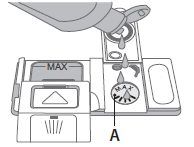
- Dishwashing detergent or tablet make dish clean. To open the detergent dispenser use the opening device A. Introduce the detergent into the dry dispenser B only. Place the amount of detergent for washing directly inside the tub. If all-in-one detergents are used, we recommend using the TABLET button as the dishwasher will adjust the program so that the best washing and drying results are always achieved.

- Before loading the baskets, remove all food residues from the crockery and empty the glasses. You do not need to rinse beforehand under running water.
-
Maintenance Tips
To avoid odour and sediment which can be accumulated in the dishwasher please run a high temperature program at least one a month. Use a teaspoon of detergent and run it without the loading to clean your dishwasher.
-
-
 Vacuum Cleaner
Vacuum Cleaner
-
Why the UV lamp of bed cleaner is not working?
It may due to either of two triggered devices is not actuated. Place the product completely on bedding surface. Make sure the rear wheel and rotating brush are touched the bedding surface. The UV lamp will be power on only when all these two triggered devices are actuated.
-
Usage Tips
- Do not vacuum up large objects such as tissue papers. This will cause a blockage and lower the suction power.
- Never vacuum up flammable substances and do not vacuum up ashes until they are cold.
- If the air inlets like floor brush or the extension tube are blocked, turn off the vacuum cleaner and then clear the blocked substances before restart the machine.
- It is normal that the charging bracket and the vacuum cleaner unit will get warm while charging.
-
Maintenance Tips
- Always dispose of the dust and clean the filter frequently, otherwise the dust will damage the motor.
- Failure to clean the filters and empty the dust container will restrict the airflow. This will result in poor cleaner performance.
-
-
 Freestand Cookerhood
Freestand Cookerhood
-
Why do the fans rotate automatically during "off" status?
This may be caused by natural air turbulence coming from the window. There is nothing wrong with the fans and motors.
-
What is the appropriate distance for installation between the hood and the stove?
The standard installation distance should be 650mm to 750mm between the bottom of the hood to the top of the stove.
-
Usage Tips
- To enhance the suction power of the cookerhood, you should minimize the length and the bending of the exhaust hose.
- Keep the cookerhood to operate for a few minutes after you finished cooking. This can ensure the remaining smoke & grease can be cleaned up thoroughly.
- To maximize the exhaust efficiency, please remember to close window and/or door before operation.
-
Maintenance Tips
- Dismantle the fan blades, residue pans and oil cups & dishes for thorough cleaning as accumulated grease on the blades would affect the exhaust efficiency.
- Regular cleaning can enhance the durability of your kitchen hood.
-
-
 Built-in Cookerhood
Built-in Cookerhood
-
How many type of Built-in cookerhood?
Built-in cookerhood are broadly divided into chimney hood, decorative hood, angled hood, and telescopic hood (also known as: pull-typed).
- The principle of chimney cookerhood is ascending pumping, which can directly remove the smoke and seperate the fumes from grease filter, as long as the grease filter can be cleaned regularly. Wide range of width options for most kitchens.
- In addition to exhaust function, the decorative cookerhood and angled cookerhood have an aesthetic appearance and a landscaping function. The width of the cookerhood usually starts from 90cm.
- The characteristic feature of telescopic cookerhood is their short fuselage and a shallower depth than other built-in type cookerhood. It is suitable for installation in the bottom of the kitchen cabinet for concealed installation. Suitable for kitchen cabinets with a depth of 30.2cm (12 inches) or more and a height of 26cm (10.2 inches) or more to install.
-
What is the difference between a built-in cookerhood and a traditional cookerhood?
The built-in cookerhood is mainly operated by a single powerful motor, which separates the fumes from the grease filter, and the appearance is elegance and style. The traditional cookerhood mainly collects excess oil in the oil cup. The fuselage is equipped with two motors, but the extraction rates of the two range cookerhoods is roughly the same.
-
How to choose which kind of wide cookerhood?
The width of the cookerhood should be at least equal to or greater than the width of the cooking stove, so that the cookerhood covers the hobs to ensure that the fumes are effectively removed.
-
-
 Gas Hob
Gas Hob
-
What is the advantage of the 180° rotate gas inlet?
It is a spare saving gas inlet design, we can change the gas inlet to left, down or right according to the gas inlet position.
-
Usage Tips
Do not put heavy pots or objects on the hob to prevent bending the pan support or drawing flames to the top.
-
Maintenance Tips
- Clean the surface and burner after each cooking with a semi-wet soft cloth when the gas hob is cool down. If dirt is found on surface and burner, clean them with mild detergent and warm water. Do not use any heavy duty cleaning agents which can scratch the surface.
- Avoid spills and clean the appliance frequently, as accumulated grease can cause a fire.
-
-
 Induction Hob
Induction Hob
-
Why we can’t use large heat on two cooking zones at the same time?
The reason is that the heat of the induction hob is shareable. If two cooking zones start with the large heat at the same time, the induction hob will automatically distribute the heat and reduce the heat on one side.
-
Usage Tips
The cooking zones will not switch on if the pot or pan placed on them does not have the correct dimensions. Use a magnet to check whether your pots and pans are suitable for using on the induction hob. If the magnet does not stick to the item’s base, it will not work on the hob.
-
Maintenance Tips
- Clean the surface after each cooking with a semi-wet soft cloth when the induction hob is cool down. If dirt is found on surface, clean them with mild detergent and warm water. Do not use any heavy duty cleaning agent which can scratch the surface.
- Before cleaning, make sure that the cooking zones are switched off and the residual heat indicator ("H") is not displayed.
- Sugar and foods with a high sugar content may damage the glass ceramic surface and must be removed immediately.
-
-
 Steam Oven
Steam Oven
-
Why there is steam coming out alongside the door during cooking?
This may be caused by the damaged door or door seal.
-
Why couldn’t I see the steam in the cavity when I operate the steam function?
Steam will be rapidly evaporated and not easily be seen if the oven cavity keeps at the high temperature right after finishing all convection modes. Wait 10-15 minutes after each program before switching to another cooking mode. Water tank is empty or not fixed well, damaged water pump or tube can be the other possible reasons.
-
Why does the fan keep operating after cooking ends?
After cooking ends, the electric fan will continue running for a certain period of time to cool down the cavity.
-
Usage Tips
- Use heat resistant utensils for cooking, such as heat resistant glass and heat resistant plastic.
- To maintain constant temperature during cooking, do not open the oven door unless it is necessary. To avoid affecting oven temperature, do not open the oven door to check food during cooking. If you have opened the oven door, extend the cooking time accordingly.
- For hygienic reasons and prevent condensation inside the machine, empty the water tank and keep the steam oven completely dry every time after cooking.
-
Maintenance Tips
- The ventilation openings on the oven must not be covered. Blocking the air intake or exhaust vents may cause damage to the oven and poor cooking results.
- To ensure a good ventilation around the oven, do not place any objects on top of the appliance and allow adequate space surrounding the oven.
- To avoid corrosion that would shorten the useful life of the oven, always clean the appliance after use.
- Do not use metal scouring pads, abrasive cleansers, steel-wool pads, etc. which can damage the interior and exterior oven surfaces. Use a soft and damp cloth with mild detergent to clean the oven.
- It is suggested to run the descaling mode regularly to avoid scale build up in the machine.
-
-
 Oven
Oven
-
Is there any heaters placed at the bottom of the oven?
Yes. There is a heater placed at the bottom of the oven. The heater at the bottom of the professional oven are hidden.
-
Maintenance Tips
Clean the cavity after each cooking with a semi-wet soft cloth when the oven is cool down. If dirt is found at the cavity, clean them with mild detergent and warm water. Do not use any heavy duty cleaning agent which can scratch the surface and cavity.
-
-
 Microwave Oven
Microwave Oven
-
Sizzling sound is heard during operation, is it dangerous?
User should clean the internal cavity every time after use to avoid residue remaining on the surface. Otherwise the residual being heated may cause sparkle when you turn on the oven next time.
-
Sparkling occur during operation, is it hazard?
Do not use metallic utensil OR those accessories containing metal, sparkle will occur when it comes in contact with the internal walls or the ceiling while the oven is in operation. The oven can be easily damaged. Check your container, and make sure that they are suitable for microwave use.
-
WHICH UTENSILS CAN BE USED IN THE OVEN?
Utensils and cooking containers used for the operation of microwave function should be of a material that allows microwaves to pass freely through them.
Utensils/ Materials
1. All utensil/materials should not be come with metal parts or metal trims.
2. Plastics should be heat-proof and suitable for microwave cooking.
3. Only minimal aluminum foil to cover delicate areas of food to prevent over cooking
-
Usage Tips
- Using microwave oven for frying can avoid overcooking and stop the smoke and grease from filling up the room.
- Using microwave oven to reheat beverage, bubbles won't appear even it has reached boiling point. Let it stand for a few minutes before you drink it.
- Using microwave oven to cook food that has skin wrapping around it, e.g. potato, sausage, remember to poke holes on their skin to avoid bursting during cooking.
- Do not use your microwave oven for cooking or reheating whole eggs with or without shell since they may explode even after microwave heating has ended.
-
Maintenance Tips
- The ventilation openings on the oven must not be covered. Blocking the air intake or exhaust vents may cause damage to the oven and poor cooking results.
- The oven should not be placed in a cabinet. Adequate space should be left around the oven to ensure sufficient ventilations.
- Add some lemon juice in a cup of water, place it on the glass turntable and boil for a few minutes can eliminate odors inside the oven.
- For stubborn stains in the cavity, boil a cup of water in the oven for a few minutes. Steam will soften the marks which makes cleaning more easily.
- Do not use metal scouring pads, abrasive cleansers, steel-wool pads, etc. which can damage the interior and exterior oven surfaces. Use a soft and damp cloth with mild detergent to clean the oven.
-
-
 Refrigerator
Refrigerator
-
The rear and the side panel of the fridge is hot, do I need to call service?
This is a new design to improve energy efficiency by installing the condenser inside the fridge to avoid sweating during humid days. (This situation is more obvious on the first day, but will improve afterwards)
-
VIDEOS ON ERROR CHECKING
-
How long should I wait until the newly installed fridge to reach the normal temperature?
It is advised that user should wait around 2 hours for the fridge to reach normal temperature before putting in any food for storage.
-
Strange sound is heard intermittently, is there something wrong with the machine?
The temperature of the fridge is monitored by a thermostat. When the optimum temperature is reached, the thermostat will stop the compressor. The sound is created by the on/off of the compressor.
-
What is the ideal cleanrance for normal operation?
Top : minimum 30cm
Left & right : minimum 5cm
-
Usage Tips
- Freezer is used for freezing and storing frozen food. If you store the glass bottle in the freezer compartment, the liquid inside of the bottle will freeze and cause the burst of the bottle. Therefore, please ensure the liquid (such as juice, water) volume should be less than 80% of the container volume.
- According to below suggestions, please use your fridge correctly and effectively by adjusting the freezer and fridge compartments temperature. It aims to maintain freshness of food and its own cooling effect.
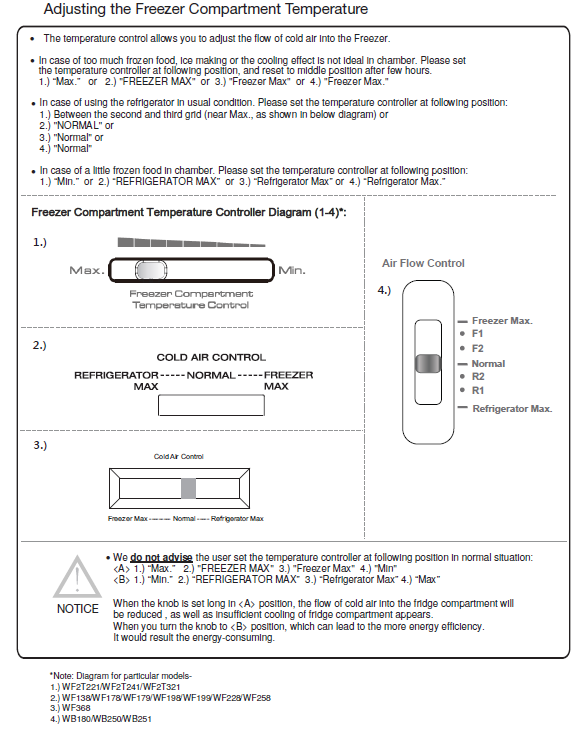

-
Maintenance Tips
- Condensation is occurring? Don't worry. Just turn down the thermostat, avoid the interior being too cold. And make sure the air circulation in the surrounding is good.
- To enhance the durability, refrigerator should be places in a shaded location.
- Do not locate the refrigerator in moist places to avoid metal parts rusty.
-
-
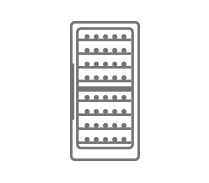 Wine Cellar
Wine Cellar
-
What is the difference between compressor-based and thermoelectric wine cellar?
A compressor wine cellar works pretty much like a standard refrigerator works, it uses a vapor compression cycle to remove heat from the cabinet, then the evaporator absorbs the heat and a condenser turns the vapor into cold air that circulate around the inner cabinet of a wine cellar.
While for thermoelectric wine cellar, it uses Peltier effect to create a heat flux between a junction of two different materials, cool air is produced when the electrical current pass through this cooling junction, and typically, it contains a small fan to distribute cool air inside a the wine cellar. Due to the limitation on cooling efficiency and temperature control, thermoelectric wine cellar tend to be small in storage size.
-
What are the advantages of compressor-based wine cellar against thermoelectric one?
Stable temperature and optimal humidity level are critical in wine storage and preservation at all time, compressor-based wine cellar is more capable and efficient in maintaining a stable temperature and with less impact on external temperature rise. However, the peltier effect employs in thermoelectric wine cellar has weak levels of cooling and will be easily overwhelmed under high temperature.
-
Usage Tips
- Before using your wine cellar, wait for at least two hours before switching the appliance on, so that the cooling circuit has time to reach full efficiency.
- Locate the wine cellar away from direct sunlight and sources of heat (e.g. stove, heater, radiator, etc.).Direct sunlight and heat sources may increase electrical consumption.
- Do not move your wine cooler while loaded with wine.
- Always store bottled wines individually and not in cases or cardboard boxes.
- Highly concentrated alcohol must be kept hermetically closed and in a vertical position.
- It is normal for moisture to build up inside the wine cellar when the air is humid.
- Condensation formed on glass door is normal, especially when humidity level is high or when there is huge temperature difference.
- Wine cellar is not a refrigerator, it should not be used for food storage.
- Wine cellar with single temperate zone is good for storing both red and white wines as they age at a constant temperature range and humidity level.
- Wine cellar with dual temperature zone is good for user who has both red and white wines and would like to have the wine ready to serve.
-
Maintenance Tips
- To clean your wine cellar, unplug wine cellar or disconnect power. Using a clean sponge or soft cloth and a mild detergent dissolved in warm water, hand wash and rinse thoroughly the removable parts and interior surfaces. Dry with a soft cloth.
- Do not use abrasive or harsh cleaners such as window sprays, cleaning waxes, concentrated detergents, bleaches or cleansers containing petroleum products on plastic parts, interior and door liners or gaskets. Do not use paper towels, scouring pads, or other harsh cleaning tools. These can scratch or damage the product.
- Clean the condenser coils regularly. If it is dirty, this obstructs air transfer and makes the motor work harder.
- To help remove odors, you can wash interior walls with a mixture of warm water and baking soda.
- When the wine cellar is working, drops of dew or frost may form on the inner liner wall. This depends on the operation. There is no need to scrape the frost off or dry off the dew. The back wall defrosts automatically. The defrost water will be automatically conveyed to a drain hole, and then collected in a container where it evaporates.
- Locate the wine cellar away from direct sunlight and sources of heat (e.g. stove, heater, radiator, etc.) as it may damage the acrylic coating.
-
 Back
Back






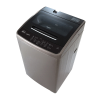

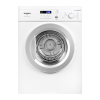




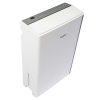
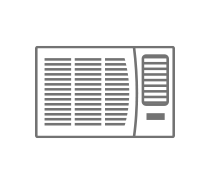
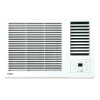






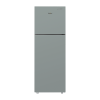
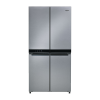
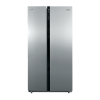

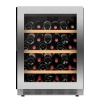

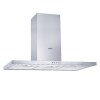
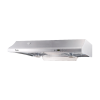

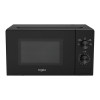

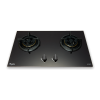
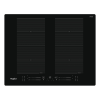

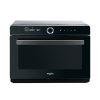







Validate your login
Sign In
Create New Account